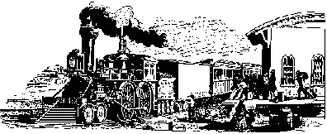
The Königin Louise Hall of Glass
The World Congress of Berlin: Prelude[]
Friedrich Wilhelm III had been planning his World Congress since the closing of Vienna's in 1826. Berlin had been in a state of construction since, all gears moving toward making Berlin an industrial and economic powerhouse. "Berlin is not going to be upstaged by Newport News," Friedrich Wilhelm was known to have said with distaste. Factories shot up everywhere, forming giant black pillars of industry, looming over the city like castle turrets. All the roads were paved, specialized cleaning crews trimmed parks, cleaned the streets, and repainted all the public buildings. Huge hotels were erected for the future arrival of the world leaders, staffed by thousands of butlers and servants and cooks. Specialty regiments were formed to guard the buildings and give an air of Prussian ironfistedness.

Maria Augusta I of Saxony, Warsaw, and Finland
It was with nothing short of absolute joy that the Prussian king received news that one of his least favorite people had died six months before the start of the Congress. The gluttonous and ancient Frederick Augustus of Saxony, Warsaw, and Finland had passed away of massive heart failure in Dresden. Now, his daughter, Maria Augusta, would be Queen of Saxony, Grand Duchess of Warsaw. She was 50 years old, unmarried, and without heir, supposedly because she was considered monstrously ugly. Things were looking grim for the House of Wettin, and the imminent extinction of Saxony's ruling family would likely be brought up at the Congress.
The Prussian ruler had a plan. He would marry Maria. He had been unmarried since the passing of his beloved wife Luise in 1810. Now, he would make sure his son Friedrich Wilhelm IV would be the master of a new Prussian Empire, encompassing Prussia, Saxony, Hanover, Warsaw, Finland, and their colonies.
That was the next step in watering the Prussian victory garden: the colonies. Prussia, starting at the World Congress of 1832, would begin a rapid expansion of colonial might. Africa was ripe for the taking. Only a few countries had any holdings there, and they were almost all mere coastal ports and glorified red tape no one lived in. The most substantial claims were South Africa, by Holland, and the Gold Coast, by the Danes. Friedrich already had plans drawn up for the new colonies. He would dive in below the equator, avoiding the merciless expanse of the Sahara, and cut right into the jungle areas where many valuable spices, woods, metals, and workers could be found. He was scheduled to have the Congo fully annexed and in maximum profit output by 1850.

Eisenbahn Prinz Wilhelm
Finally, in a massive show of Prussian might, the King would unveil two new "miracle inventions" and one "miracle building" at the Congress. The first invention was the Eisenbahn; the railroad. Truthfully, it wasn't really his country's invention. It was actually the product of a theft from Charles Goodyear's personal design sketchbooks in 1826. Goodyear had come up with the idea for a railroad way back in his childhood, upon hearing of specialty carts used by Virginian miners. Since then, he and the late Eli Whitney had advanced the idea quite some ways. However, since 1826, Prussia's best scientists had been on the job perfecting it, and they were satisfied it was in working order when they rolled out the Eisenbahn Prinz Wilhelm, named in honor of the younger Prince of Prussia, from a factory on the Baltic. It was a mammoth feat laying the rail from Berlin to Potsdam in time for the Congress and making sure it was safe.
The second invention was the Glühbirne; the incandescent light bulb. This was purely a Prussian invention. A scientist named Ludwig Klink spent years pouring over the idea until he had finally created a working prototype. They weren't extremely safe, but the other nations would stand in awe of the little glass balls' two minutes of somewhat flickering light.
The miracle building would be the Königin Louise Hall of Glass, an absolutely amazing mansion-museum that would be the center of organized national exhibitions, giving each attending nation a chance to hang up their flag, sell souvenirs, food, and the like, and promote their nation in general. Much of the building was made of solid glass, including the entire ceiling. After the Congress was over, the Hall would be turned into the Royal Prussian History Museum and Library. It was definitely going to pay for itself.
And thus, Prussia prepared to open its doors to the world, and the King prepared to unify the houses of Hohenzollern and Wettin.